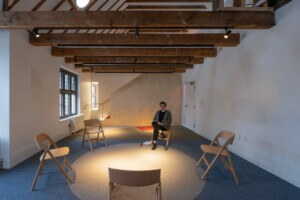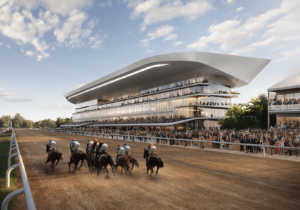Below is the second of three articles written as part of the New Voices in Architectural Journalism fellowship, a mentorship-based program developed by The Architect’s Newspaper and the Pratt Institute School of Architecture. All three articles have been published in the June 2022 issue of AN; a second round of pieces written by the inaugural New Voices cohort—Ekam Singh, Catherine Chattergoon, and Monty Rush—will be published in the July/August issue of AN. You can learn more about New Voices in AN editor-in-chief Aaron Seward’s introductory note.
In April 2020, an unassuming basement in Flushing, Queens, transformed overnight into a collective kitchen and dining hall, a food packaging hub, and a prayer hall. With help from community leaders, neighbors, and home cooks, the facility was able to feed thousands of frontline workers and homebound patients suffering from the effects of COVID-19.
“We were packaging a hundred meals in a matter of hours,” recalled Bhai Harnek Singh, a community organizer who manages the Sikh Center of New York in Flushing, one of several Sikh gurdwaras in the city. The following month, the same basement hosted a small wedding reception, with the subsequent blessing taking place just upstairs. When COVID surged for a second time, the gurdwara expanded next door into an incomplete one-story structure as operations scaled up. I visited the space this past January with the intention of asking a few questions about this ever-adaptive typology. Before I could take out my notebook, I was greeted with a smile and served a delicious lunch and tea.
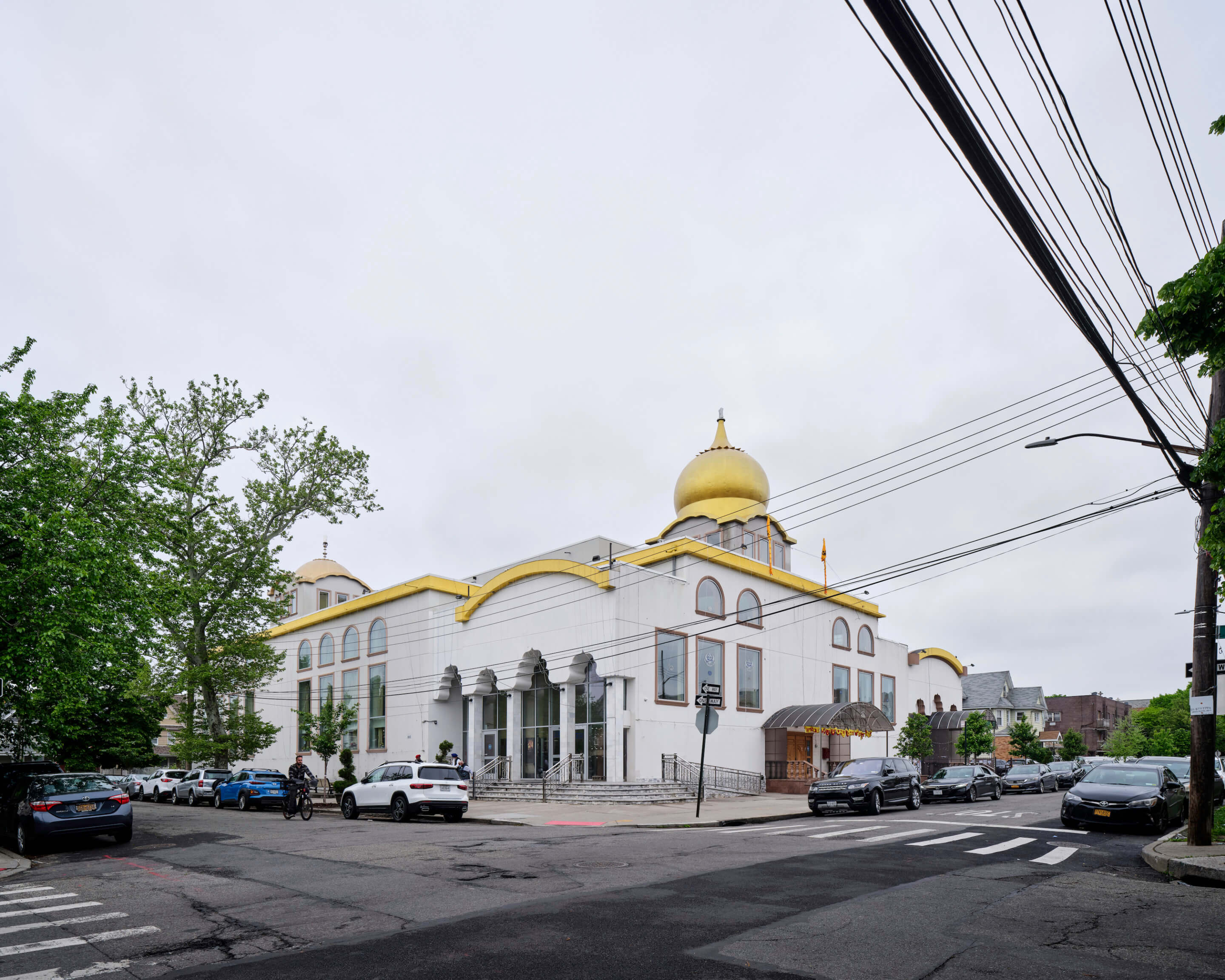
Loosely defined, gurdwaras are places of worship in Sikhism, the world’s fifth-largest organized religion. The majority of Sikhs reside in Punjab, the northwestern region of India, with around 500,000 followers living in the United States. One of the primary tenets of the faith is the spirit of seva (selfless voluntary service) and sarbat da bhala (well-being of all people). This ethic of service typically takes the form of a langar (community kitchen), where free warm meals are served to all visitors, without any distinction as to religion, race, gender, or economic status. According to Devinder Pal Singh, the director at the Center for Understanding Sikhism in Ontario, Canada, in times of emergency “gurdwaras act as shelters or refuges for people.” He recalled the Fort McMurray wildfires of 2016, when Alberta’s Sikh community came together to collect food and clothing at a local gurdwara for those affected. More recently, gurdwaras across North America opened their doors to healthcare workers and Black Lives Matter protesters alike.
The tradition of seva extends to the architecture of the gurdwara. Singh explained that the first North American gurdwara, in Stockton, California, evolved from a community room into an elaborate campus, while retaining its essential character. A peculiar feature of this typology is the perpetual building activity that surrounds it. Through donations and grants, gurdwaras tend to be in a constant state of construction. This is the case even for historic examples, such as the monumental Gurdwara Rakab Ganj Sahib in New Delhi, which erected a makeshift hospital on its premises during COVID’s second wave in India.
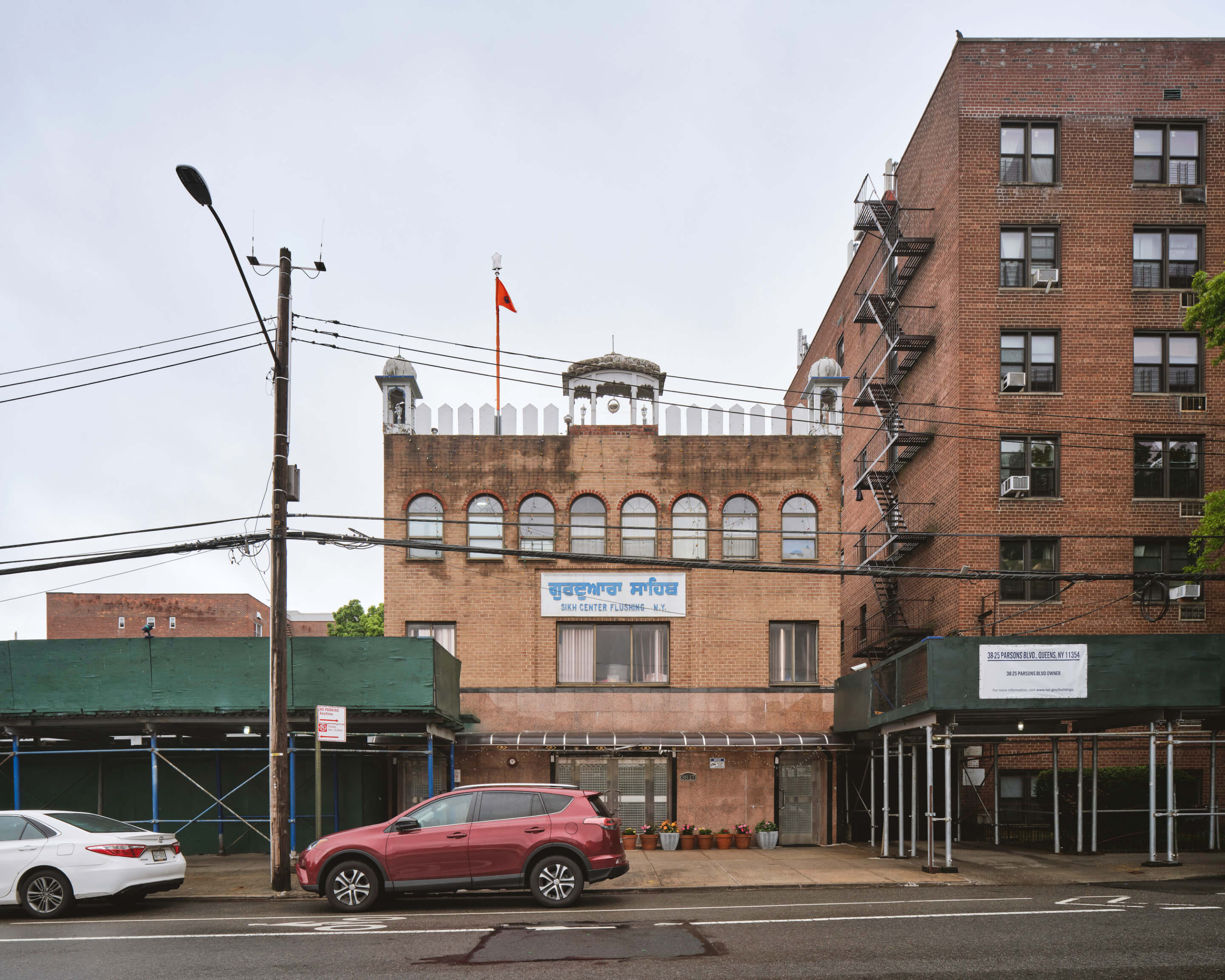
In stylistic terms, gurdwaras are eclectic, incorporating elements of Rajput and Mughal architecture, including minarets, portals, kiosks, domes, foliated arches, and bangaldar roofs. These elements have evolved into signifiers of the typology, to be combined or omitted pending circumstances of cost and context. The gurdwara in Queens Village, New York, incorporates none of these elements on its low-lying facade, whereas the Flushing gurdwara features a tripartite brick facade topped by a bangaldar roof, merlons, and arched kiosks. Meanwhile, the comparatively large gurdwara in South Richmond Hill, New York, recalls the grandeur of 19th-century temples in Punjab. (Perhaps the only essential feature of gurdwaras the world over is the nishan sahib, a saffron pendant mounted on rooftops or at places of entry.)
While most contemporary gurdwaras integrate the occasional dome or arch on an otherwise flat facade, their distinguishing feature turns out to be their unique extensibility. The programmatic range is extraordinary and challenges what architects mean by “typology.” The simplest gurdwara can be a single room, provided there is a Granth Sahib, the Sikh holy book, within reach. Or it can be a sprawling campus, complete with chapels, langars, sarovars (pools of water), marriage halls, multipurpose spaces, clinics, and more.
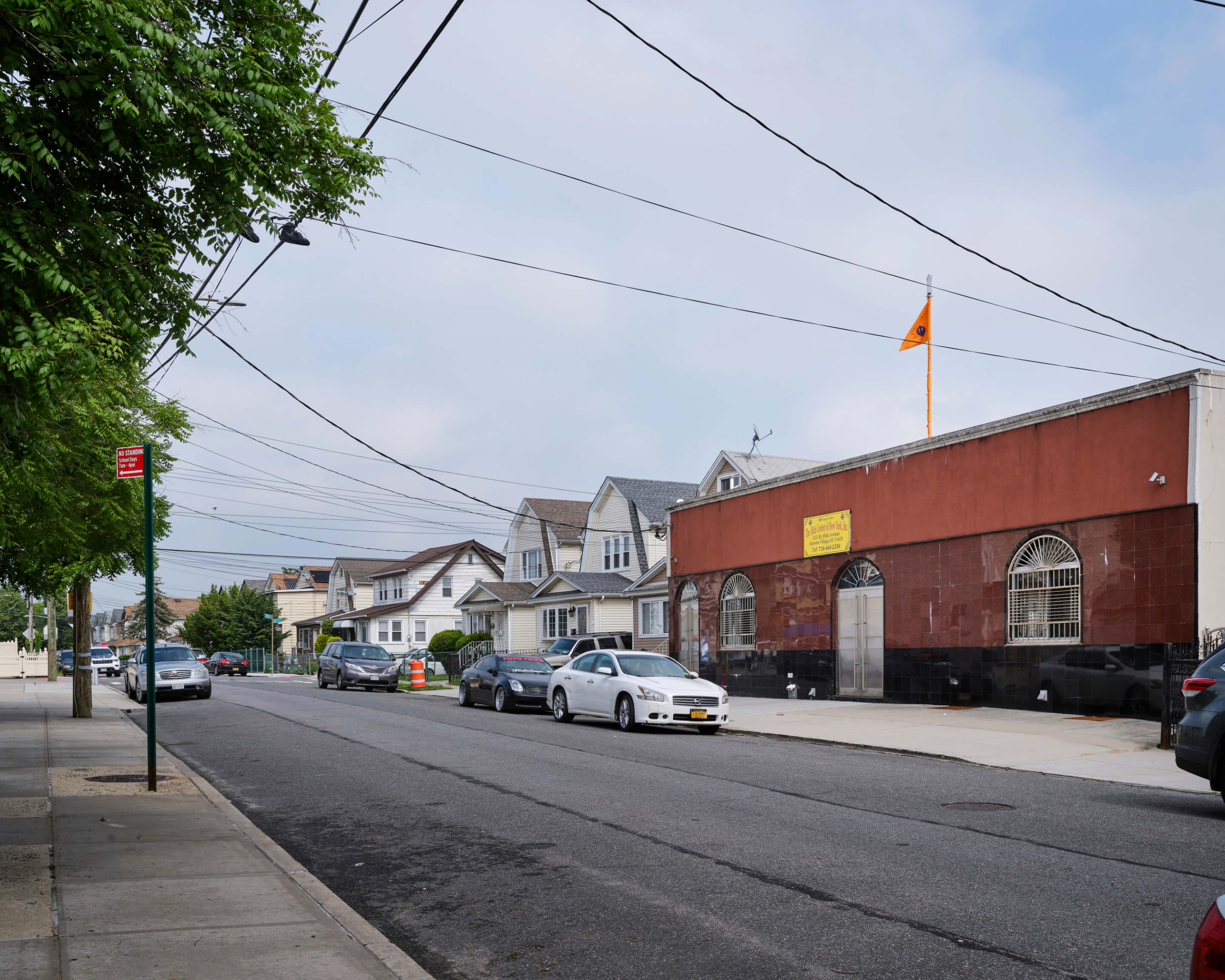
Equally interesting is the speed with which these expansions can occur. For instance, after starting in a basement, the Flushing center is nearing completion of a multipurpose hall. But these adaptations are just as likely to be ephemeral. During the first shuttered weeks of the pandemic, the Queens Village gurdwara moved its kitchen out of its langar hall to an adjacent parking lot, which enabled volunteers to continue cooking meals. In Sunnyside, Queens, Sikh community organizers established a langar at a protest site where demonstrators had taken a stand against the killings of George Floyd and other Black Americans by police. In Pacoima, Los Angeles, protesters found respite under a tent in Pan Pacific Park set up by the Khalsa Care Foundation, a local gurdwara. The temporary structure distributed plates of pasta to anyone who wanted it.
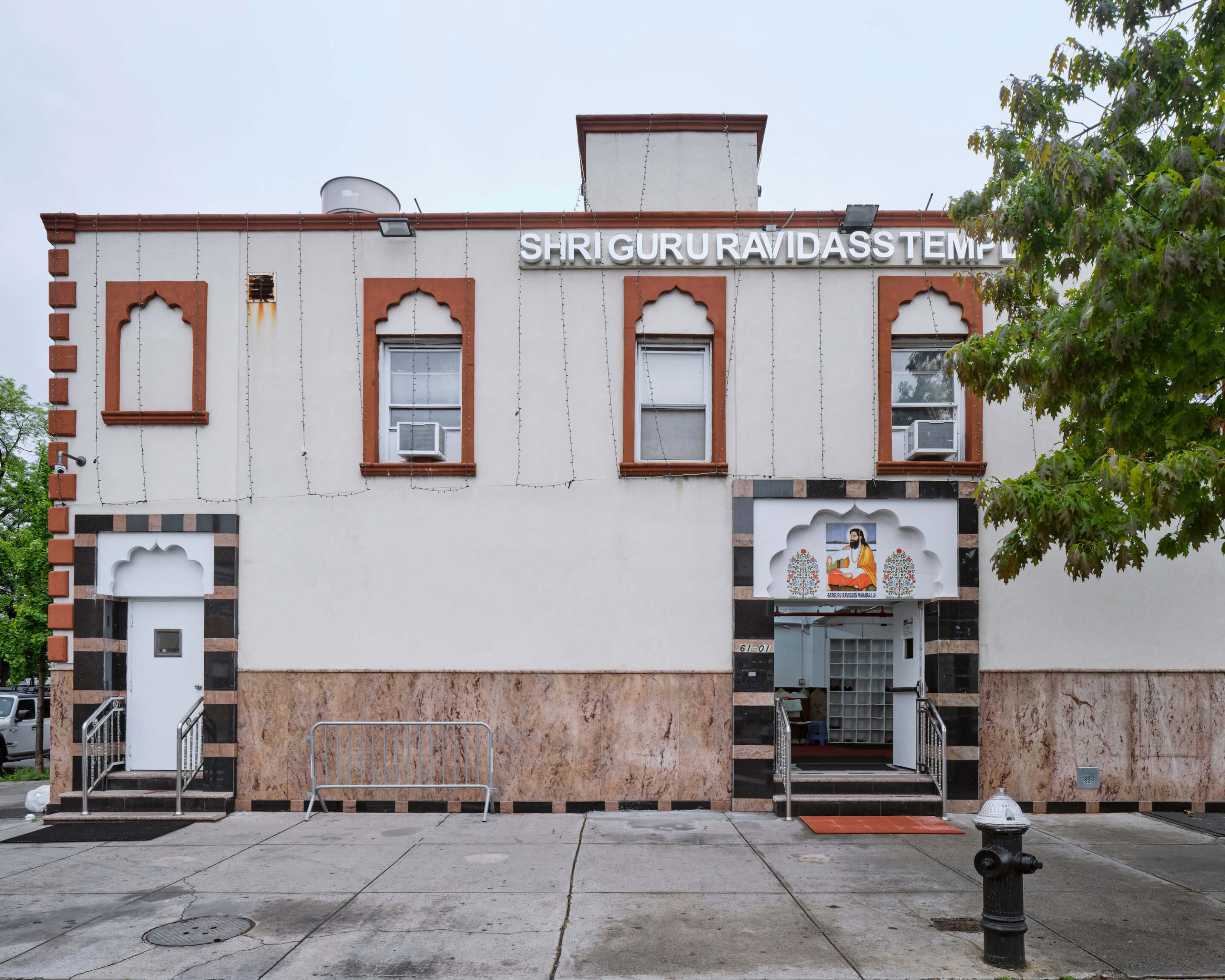
It seems that this centuries-old spatial template is only gaining in relevance. Civic spaces around the world are under threat with rising domestic and international tensions in society in part due to social inequities, climate change, refugee crises, and an endemic pandemic. For architect and historian Swati Chattopadhay, who researches temporary structures, the ability of a community to swell and contract is key to its flourishing. “Momentary and routinized interventions play a large part in creating community and engaging gathering spaces in cities,” Chattopadhay noted.
Gurdwaras approach civic engagement through acts of communal service and solidarity. Architects should more closely consider how these acts can take ephemeral, spatial form. At a certain temporal scale, all architecture is finite, passing inevitably with the seasons. In modeling future civic spaces, practitioners might take that fact to heart.
Ekam Singh is an MArch student at the Pratt Institute School of Architecture. In 2021–22, he was one of three New Voices in Architectural Journalism fellows. The program was sponsored by Pratt and AN.









